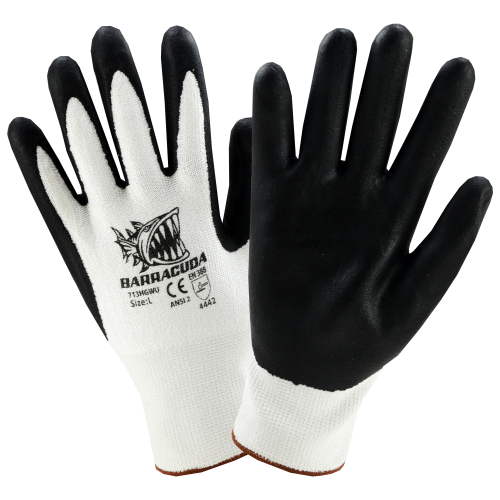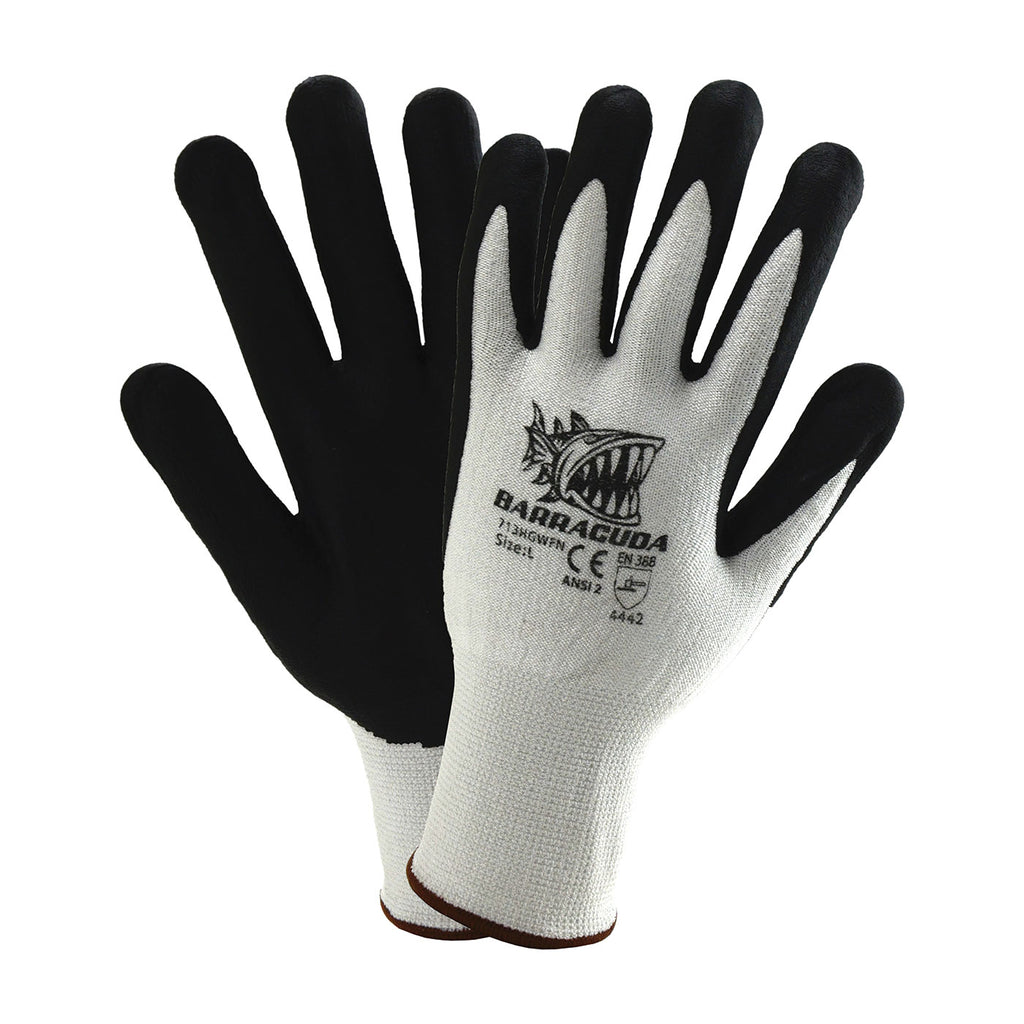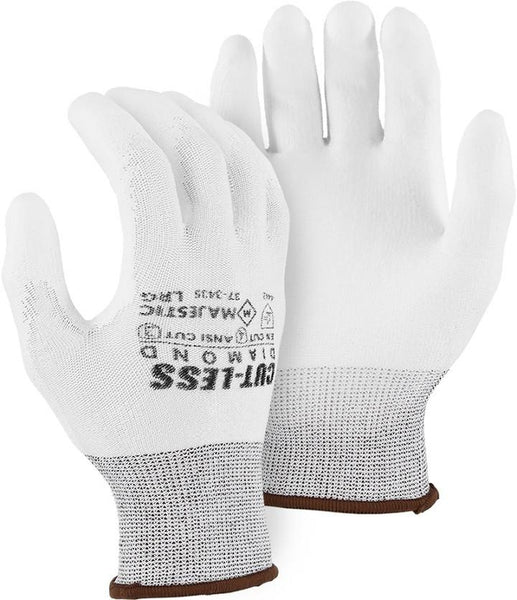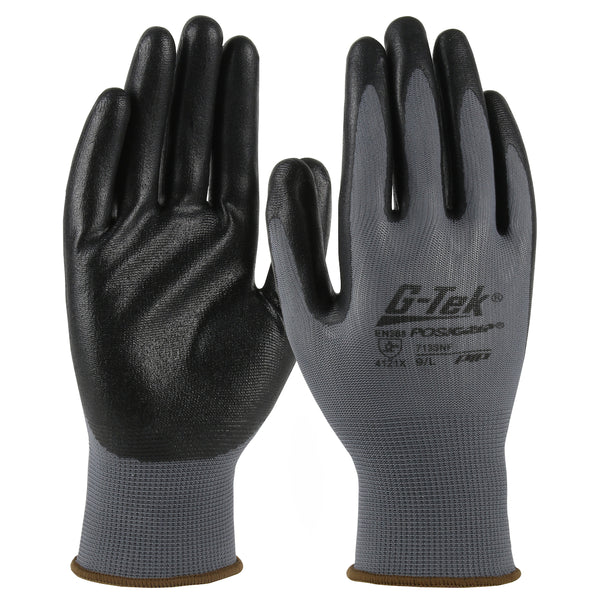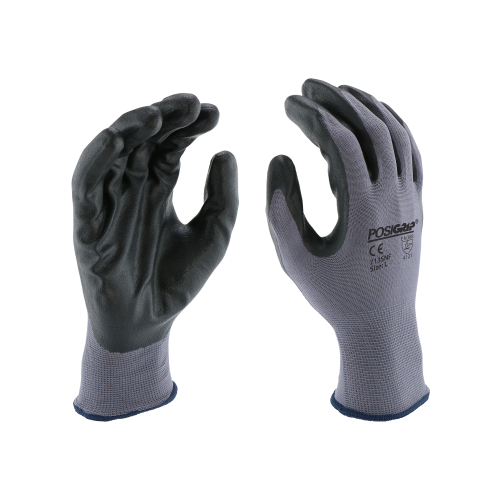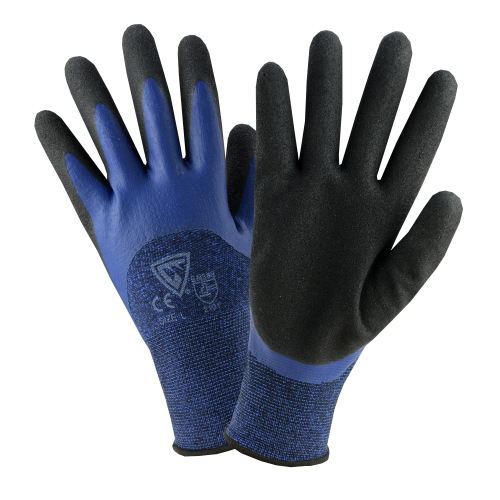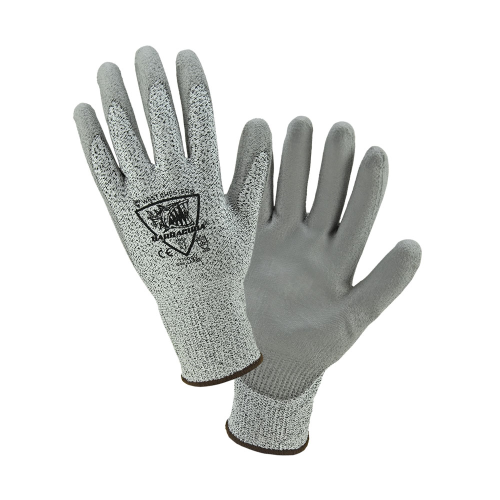West Chester 713HGWFN Barracuda Seamless Knit HPPE Blended Glove with Nitrile Coated Foam Grip on Palm & Fingers
Product Description
Ideal for electronics, glass cutting, sheet metal handling, parts assembly, sharp small parts handling and construction.
FEATURES
- Seamless construction offers increased comfort and breathability
- HPPE blended shell is lightweight and provides excellent dexterity, tactile sensitivity and cut resistance
- Foam Nitrile coatings are breathable and durable, designed with a cell structure that disperse fluids on contact for an improved grip
- Knit Wrist helps prevent dirt and debris from entering the glove
- Color coded hems for easy size identification
- Washable, resistant to chemicals, water, and ultraviolet light
- ANSI CUT LEVEL: A2
- EN388 RESULTS: 4442BX
LINER MATERIAL: HPPE
HPPE: Products constructed with High Performance Polyethylene Fiber (HPPE) fibers are suitable for protection against mechanical hazards in the toughest environments. HPPE fiber products can be designed for different protection levels, up to the highest levels, while maintaining an unprecedented level of comfort. They are also highly resistant to abrasion and chemicals, so you can rely on them to provide long-lasting protection.
COATING: NITRILE
Nitrile: Nitrile is a synthetic rubber compound that offers excellent puncture, tear and abrasion resistance. Nitrile is also known for its resistance to hydrocarbon-based oils or solvents. Nitrile coated gloves are the first choice for industrial jobs which require handling of oily parts. Nitrile is durable and helps to maximize protection.
GRIP: FOAM
Foam: Available in Nitrile, NeoFoam® and PVC, foam coating cell structure is designed to channel fluids away from the surface of the object helping improve grip in slightly oily/wet conditions. Secure grip in dry conditions. Oily/wet grip varies with density of cell structure.
APPLICATIONS
• Automotive • Glass Handling • Sheet Metal Work • Cutting Applications
CARE INSTRUCTIONS
Wash gloves in slightly warm water not exceeding 104° F (40° C). A mild non-ionic detergent (enzymatic detergents are permitted) should be used. A 5 -10 minute cycle

